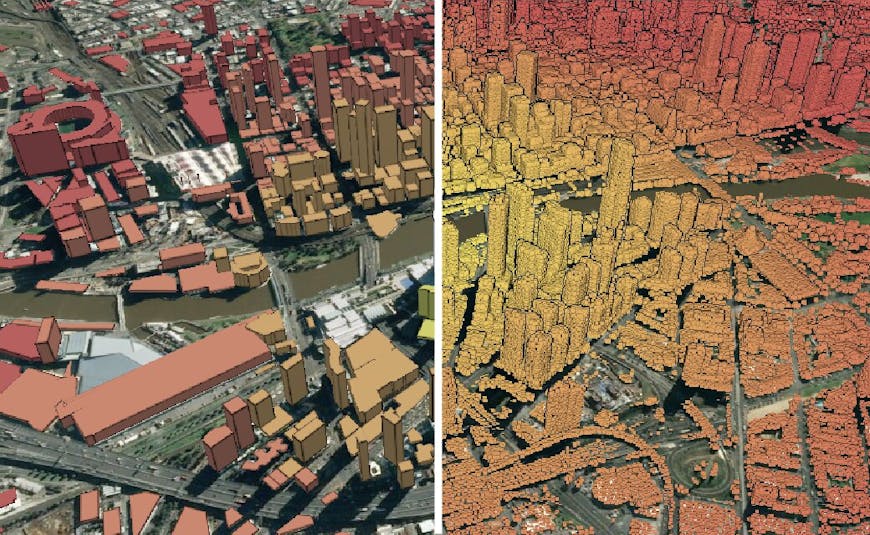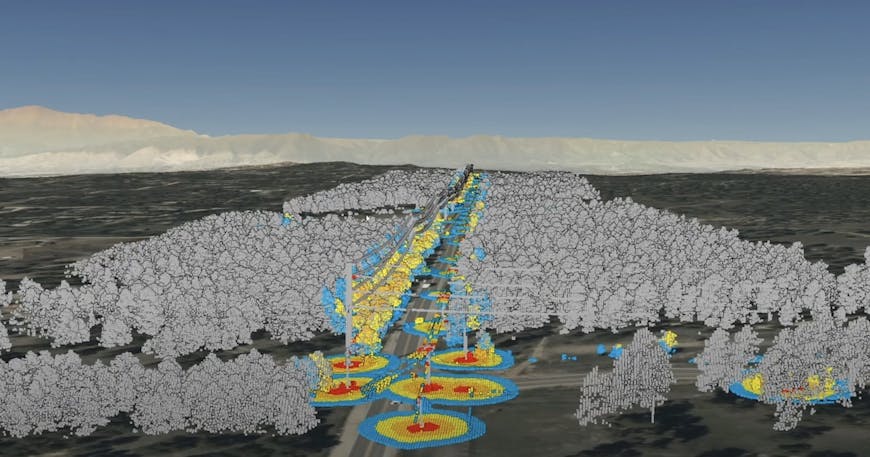Cesium Release Roundup November 2020
We’ve been improving our learning materials, including adding new tutorials on how to build a flight tracker and how to visualize a proposed building. Our newest addition is a guide to styling and filtering 3D Tiles in CesiumJS, with instructions on how to style point clouds, how to color Cesium OSM buildings based on conditions, such as distance from a focal point, as well as as tips on how to handle null properties, define new properties, and incorporate special functions to make styling easier.

Heatmap of Melbourne created with 3D Tiles Styling. Left: OSM Buildings 3D Tiles. Right: Point cloud 3D Tiles.
If you have feedback on these tutorials or have ideas of what else you’d like to see in our documentation, let us know on the community forum.
CesiumJS 1.75 release
CesiumJS 1.75 is now available. This release includes various fixes for TypeScript definitions and various internal improvements.
See the changelog for a full list of updates and links to the discussion & code on each one.
Powered by Cesium
Intel is using Cesium to create specialized 3D geospatial solutions for enterprise customers working in energy, asset management, and remote inspection. Intel’s platform combines combines artificial intelligence algorithms to process and classify datasets with Cesium’s visualization and analytics tools to make gleaning insights from 3D datasets more broadly accessible.

Intel Geospatial identifying vegetation encroachments around electrical poles with a LiDAR point cloud visualized with Cesium World Terrain.